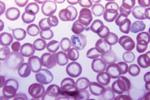Cells
S5L3 Students will diagram and label parts of various cells (plant, animal, single-celled, multi-celled).
a. Use magnifiers such as microscopes or hand lenses to observe cells and their structure.
b. Identify parts of a plant cell (membrane, wall, cytoplasm, nucleus, chloroplasts) and of an animal cell (membrane, cytoplasm, and nucleus) and determine the function of the parts.
c. Explain how cells in multi-celled organisms are similar and different in structure and function to single-celled organisms.
a. Use magnifiers such as microscopes or hand lenses to observe cells and their structure.
b. Identify parts of a plant cell (membrane, wall, cytoplasm, nucleus, chloroplasts) and of an animal cell (membrane, cytoplasm, and nucleus) and determine the function of the parts.
c. Explain how cells in multi-celled organisms are similar and different in structure and function to single-celled organisms.
What are Cells?
Every living thing is made of cells. It is estimated that the human body has between 60 and 90 trillion cells! Each of these tiny little parts has a function in our body. Some cells are for keeping us healthy, others are for transporting oxygen and others work together to help us move. If you would like to learn more about the details of what cells are, you can click here.
Plant and Animal CellsVisit StudyJams to learn all about the characteristics and differences between plant cells and animal cells.
You can also check out cellsalive.com and learn about the various parts of plant and animals cells and what each one does. Another great site is the McGraw Hill interactive tour of cells. Cell TheoryWhile observing dead cork samples with a crude lens, Robert Hooke identified and named “cells.” He thought that the small, simple units looked like the bare prison cells of his time, and the name cell stuck. His work launched a new frontier in scientific exploration that led to modern cell theory:
DNA Extraction LabThe linked website will explain how to gather DNA from various plant cells. It is a pretty cool experiement!
Student SpotlightThe video below was the result of a cell analogy project I had my class do. The kids had to compare a cell with some other type of structure, which required them to think a little deeper about each part of the cell. Jesse went all in and came up with a cell rap about how cells are like airplanes.
|
Cancer--Cells Gone WildSometimes kids want to know, why would I ever need to know about cells? Well, there are many reasons, but the most common answer is that you need to know how your body works, so that you can take care of it effectively. The video linked below explains how cells are involved in one of the most common and deadly diseases--Cancer.
|
